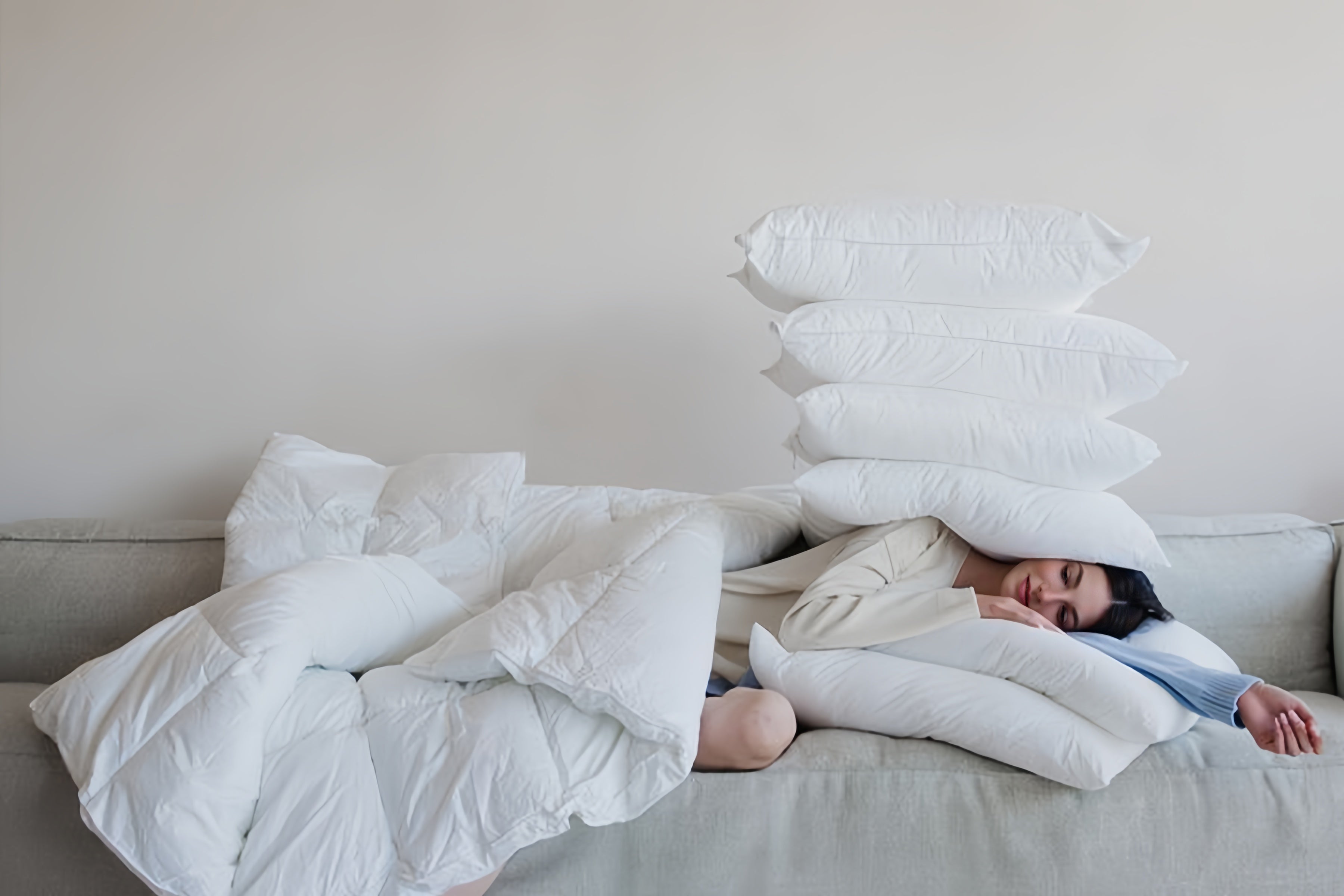Do you ever wake up with stiff or sore shoulders and wonder what went wrong? You might blame stress, age, or even your mattress. But in many cases, the real culprit is how you position your pillow.
According to the American Chiropractic Association, nearly 1 in 3 adults experience shoulder pain that interferes with sleep at least once a week. The wrong pillow—or the wrong pillow placement—can worsen this problem. The good news: with the right positioning, especially using a moldable goose down pillow, you can reduce pain, improve alignment, and finally wake up refreshed.
Why Pillow Positioning Matters
Improper pillow use can:
-
Put excess pressure on the shoulder joint, worsening inflammation.
-
Cause neck and spine misalignment, leading to radiating pain.
-
Restrict blood circulation, leaving you with tingling or numbness.
A properly positioned pillow supports the head, neck, and shoulders in harmony—relieving pain instead of creating it.
Common Mistakes vs. Correct Pillow Positioning
| Mistake | Why It Hurts | Correct Position | Why It Helps |
|---|---|---|---|
| Pillow too flat (side sleepers) | Shoulder sinks, spine misaligned | Medium-to-high loft pillow filling shoulder gap | Keeps head & spine level |
| Pillow too high (back sleepers) | Tilts head forward, strains neck & shoulders | Medium loft pillow | Supports neck without overextending |
| Stomach sleeping with thick pillow | Twists shoulders and neck | Low-loft pillow or flattened goose down pillow | Reduces strain on shoulders |
Best Pillow Positioning Tips
1. For Side Sleepers: Fill the Shoulder Gap
-
Use a medium-to-high loft pillow.
-
Keep head aligned with spine.
-
Hug a second pillow to stabilize upper body.
-
Pro Tip: Mold your goose down pillow higher on one side to perfectly support the shoulder gap.
2. For Back Sleepers: Gentle Elevation
-
Choose a medium loft pillow.
-
Avoid pillows that push your head forward.
-
Add a small pillow or folded towel under each arm to ease shoulder tension.
3. For Stomach Sleepers: Keep It Low
-
Use a low-loft pillow or flatten a goose down pillow.
-
Place a second thin pillow under your chest or shoulder to minimize twisting.
4. Extra Support Strategies
-
Place a pillow between your knees (side sleepers) for hip-shoulder alignment.
-
Add a pillow under the painful shoulder or chest for reduced pressure.
-
Use a pillow behind your back to prevent rolling into painful positions.
Why Goose Down Pillows Are a Game Changer
Unlike memory foam, goose down pillows are moldable—you can shape them exactly the way you need. That means:
-
Customizable support without stiffness.
-
Breathable comfort that stays cool.
-
Easy fluffing for quick adjustments.
This flexibility makes goose down pillows perfect for people struggling with shoulder pain.
FAQ: Shoulder Pain & Pillow Use
1. Can the wrong pillow cause shoulder pain?
Yes. A pillow that’s too flat, too high, or too firm can force your shoulder into unnatural positions.
2. How do I know if my pillow is the right loft?
When lying down, your head and spine should be level. If your head tilts up or down, your pillow loft is wrong.
3. Do goose down pillows really help with shoulder pain?
They won’t cure pain, but their moldability makes them ideal for relieving pressure and improving alignment.
4. How often should I replace my pillow?
Most pillows lose support after 3–5 years. If yours feels flat or lumpy, it’s time for a new one.
5. Is there a “best” sleeping position for shoulder pain?
Side sleeping with a supportive pillow is often recommended—but with proper pillow positioning, all sleep styles can work.
Final Thoughts
Shoulder pain doesn’t have to ruin your nights. With smarter pillow positioning—and the adaptive comfort of a moldable goose down pillow—you can ease tension, improve alignment, and wake up feeling pain-free.
🌙 Don’t let shoulder pain steal another night’s sleep. Try our moldable goose down pillows, crafted for comfort and flexibility.
👉 Order today and enjoy 10% off with code BLOG10. Hurry—offer ends soon!




